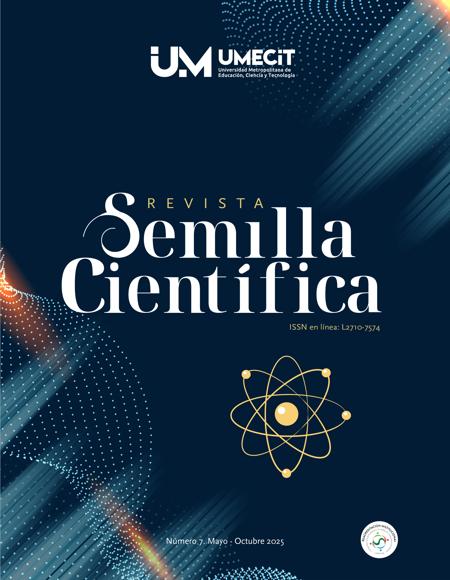Abstract
The research shows the risk posed by floods in Panama, affecting numerous regions of the country and leaving multiple consequences on the population. The design of an alarm was proposed as a strategy to reduce flood risks, bringing multiple benefits to the communities. The purpose was to design an alarm system using Arduino technology as a flood prevention measure to protect human lives in Panama. The study was carried out under a quantitative and documentary type nature, developed through bibliographic design, with a descriptive level. The population of interest was Panamanian people in areas prone to flooding, such as: Chiriquí, Bocas del Toro, Panama City, West Panama and Darien. The conclusion reached was that the ability of Arduino technology to provide an accessible and effective solution in flood prevention can contribute to the reduction of the negative socioeconomic impact suffered by the areas most prone to this disaster. However, limitations were noted such as the lack of testing in real environments and situations and the lack of studies about the specific circumstances in the most vulnerable areas. The study showed that the design of an alarm system using Arduino technology has the potential to be a great strategic tool for effective flood prevention. For this reason, a field study is recommended to evaluate the effectiveness and to be able to adapt this system to the needs of each community.
References
Asana, “¿Qué es una revisión después de la acción (AAR)?”, 2024. Disponible: https://asana.com/es/resources/after-action-review-template. [Abril. 22, 2024]. [9]
C. N. Sheila,ALNAP Inundaciones, Instituto de Estudios sobre Conflictos y Acción Humanitaria (IECAH). Madrid: Alce Comunicación, 2010. Disponible: https://iecah.org/wp-content/uploads/2010/12/LIBRO_ALNAP-INUNDACIONES.pdf [7]
Dirección General del sistema Nacional de Protección Civil, “Guía municipal de gestión de riesgo de desastres en Panamá”, 2023. Disponible: https://www.sinaproc.gob.pa/wp-content/uploads/2020/05/Guia-Municipal-Panam%C3%A1.pdf [Abril. 07, 2024]. [8]
E. E. Gallardo Echenique, Metodología de la Investigación. Huancayo Perú: Univ. Cont., 2017. [Abril 22, 2024]. Disponible: https://repositorio.continental.edu.pe/bitstream/20.500.12394/4278/1/DO_UC_EG_MAI_UC0584_2018.pdf [12]
Grctools, “Herramientas de análisis en el marco de la implementación de proyectos”, Junio, 2017. Available: https://grctools.software/2017/06/20/herramientas-analisis-implementacion-proyecto/text=tomadedecisiones. [Abril. 22, 2024]. [11]
L. Zarza. “¿Qué es una inundación?” iAgua. [abril 22, 2024]. Disponible: https://www.iagua.es/respuestas/que-es-inundacion [1]
M. Tamayo, El proceso de la investigación científica, 4a ed. Limusa, 2001. Accedido el 22 de abril de 2024. Disponible: https://books.google.es/books?hlgoogle-academic=proceso+de+la+investigación+científica [13]
Mailchimp, “Qué es un estudio de caso y por qué deberías utilizarlo”, Mayo, 2023. Available:https://mailchimp.com/es/resources/what-is-a-case-study/#:~:text=Un%estudio%decaso. [Abril. 22, 2024]. [10]
Ministerio de Ambiente, Republica de Panama, “Diagnóstico de áreas propensas a inundaciones en panamá”, 2022. Disponible: https://climateactiontransparency.org/resources/panama-diagnosis-of-flood-prone-areas-in-panama/ [Abril. 07, 2024]. [3]
Ministerio de Economías y Finanzas, Republica de Panama, “Inventario de las Incidencias de los Desastres”, 2023. Disponible: https://www.mef.gob.pa/wp-content//2023/06/Inventario-de-los-Desastres-2023.pdf [Abril. 07, 2024]. [4]
P. M. Claudio. Arduino. Ciudad Autónoma de Buenos Aires: 6ta. Ed. 2017. Disponible: https://es.scribd.com/document/454229487/Arduino-de-cero-a-experto-pdf [2]
R. Hernández, C. Fernández y P. Baptista, Metodología de la Investigación, 6a ed. 2014. Accedido el 22 de abril de 2024. Disponible: https://www.esup.edu.pe/wp-content/uploads/Hernandez,FernandezyBaptista-MetodologíaInvestigacionpdf [14]
UNDP, “Panama: UNDP Climate Change Adaptation,” adaptation-undp.org, 2024. Disponible: https://www.adaptation-undp.org/explore/latin-america-and-caribbean/panama [15]
W. U. Depaz Sandom, “Prototipo usando tecnología Arduino para medición de nivel de agua en lagunas peligrosas del Parque Nacional Huascarán”, Universidad Nacional Santiago Antúnez de Mayolo, Huarez-Perú, 2018. Disponible: https://repositorio.unasam.edu.pe/handle/UNASAM/3361 [5]
Publication Facts
Reviewer profiles N/A
Author statements
Indexed in
- Academic society
- Universidad Metropolitana de Educación, Ciencia y Tecnología
- Publisher
- Universidad Metropolitana de Educación, Ciencia y Tecnología













